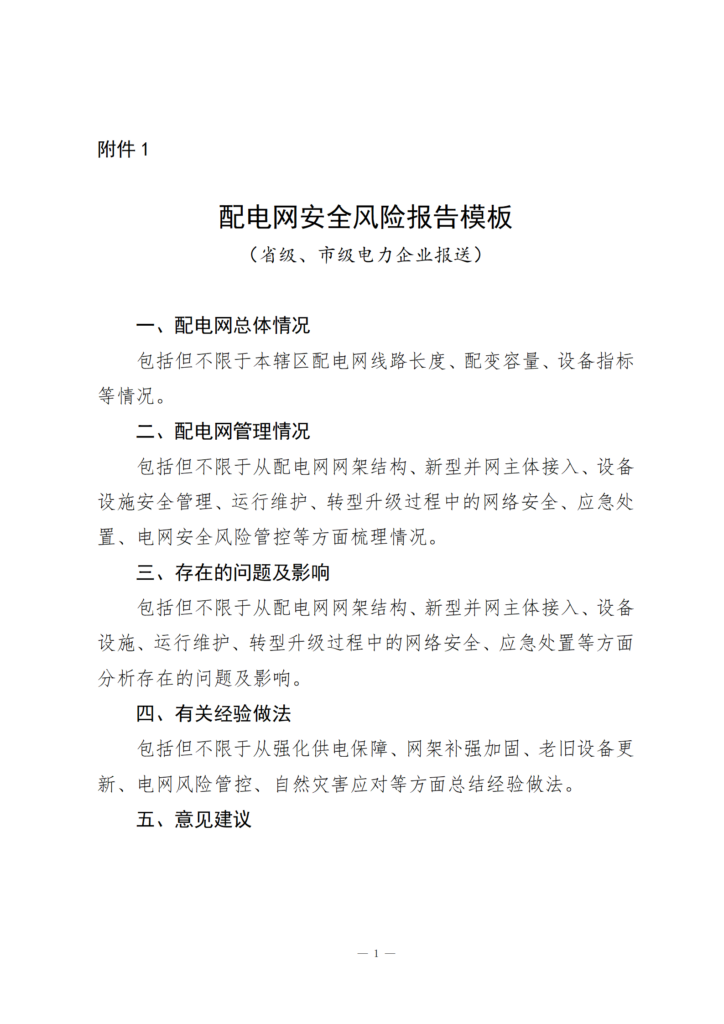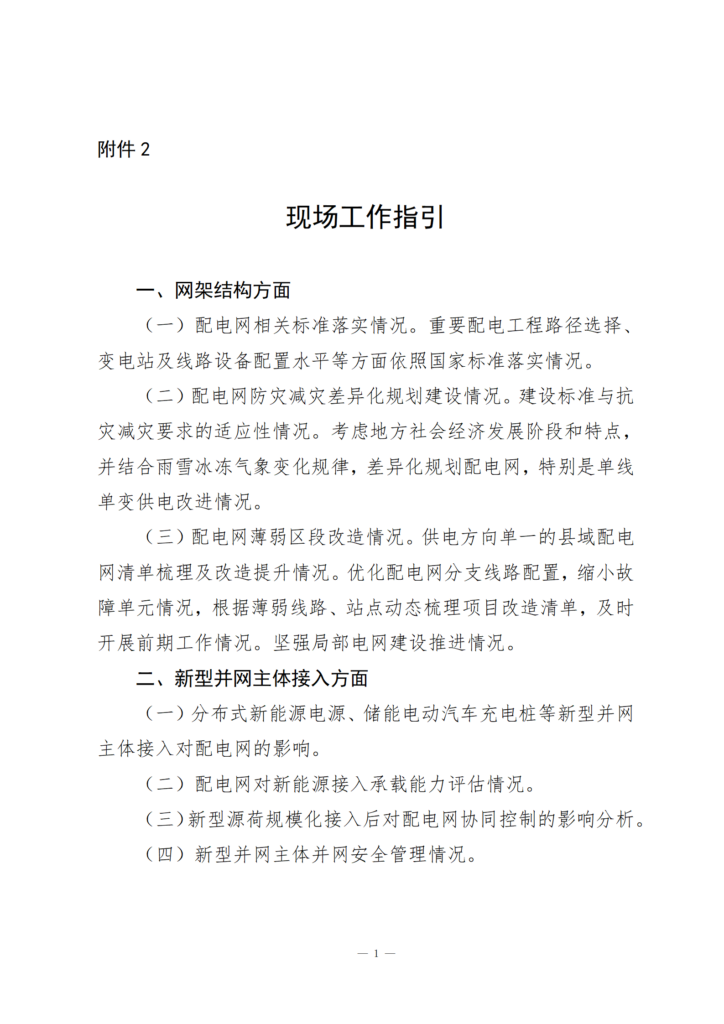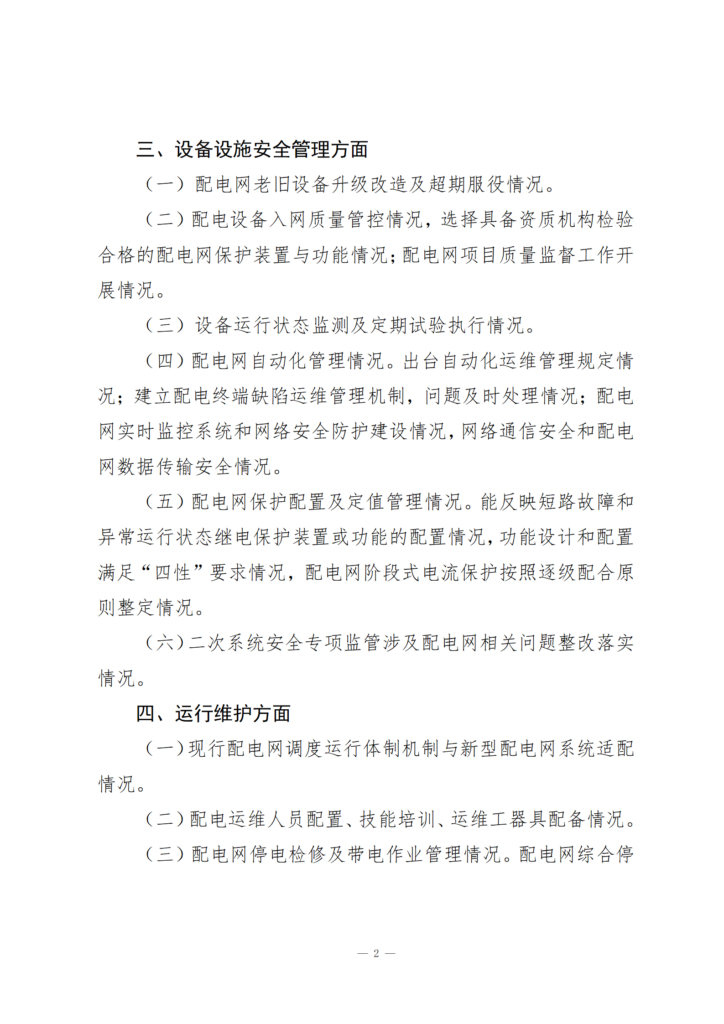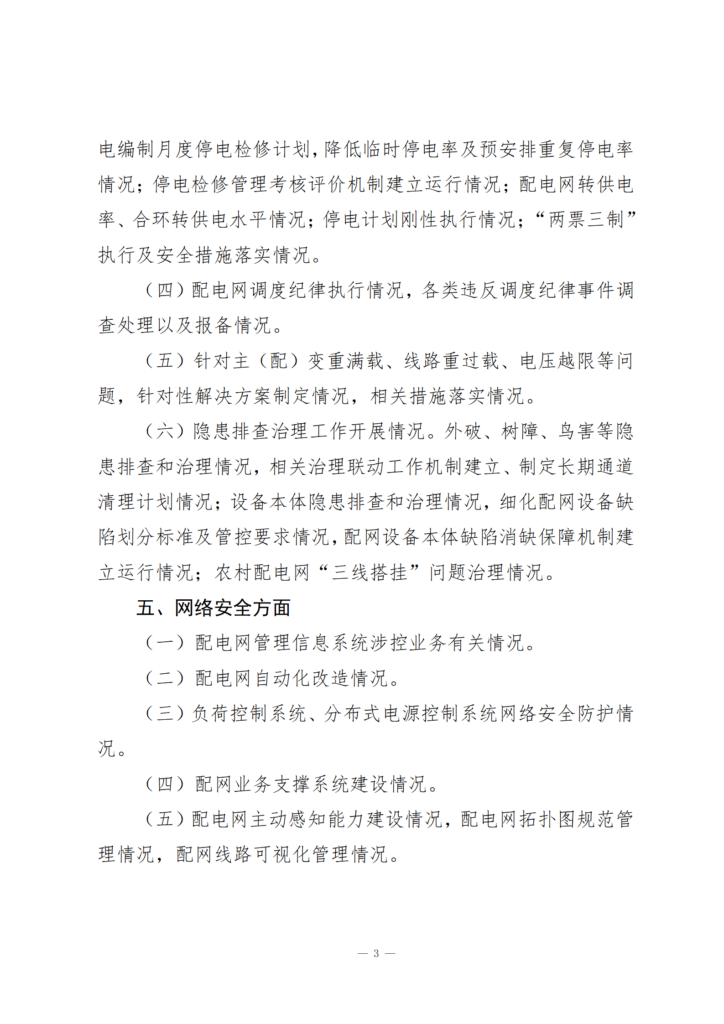On March 21, the National Energy Board issued the "Distribution Grid Security Risk Control Focused Action Work Program", which mentioned that the work focuses on analyzing the distribution grid network structure, access to new grid-connected main body, equipment and facilities safety management, operation and maintenance, network security in the process of transformation and upgrading, emergency response, and other aspects of the analysis.
For the original text, see below:
Distribution network security risk management and control key action work program
In order to deeply study Xi Jinping's thought of socialism with Chinese characteristics in the new era, comprehensively implement the spirit of the 20th Party Congress, implement the new energy security strategy of "four revolutions and one cooperation", closely follow the objectives of power supply and transformation under the new situation, focus on the security risks of safe operation of distribution grids, power supply guarantee, disaster prevention and mitigation, and strong and reliable power grids, and promote the development of urban and rural distribution grids to solve the problems of weak development, and comprehensively improve the power supply guarantee and comprehensive carrying capacity. To solve the problems of weak development of urban and rural distribution networks, and to comprehensively improve the power supply guarantee and comprehensive carrying capacity of distribution networks, the National Energy Administration has decided to carry out the key actions of distribution network security risk management and control. The program is formulated as follows.
I. Scope of work
The action selected six provinces, Jilin, Jiangsu, Jiangxi, Shandong, Guangxi and Shaanxi, focusing on summarizing and analyzing the outstanding problems of safe operation and reliable power supply of 110kV and below power grids.
II. Focus of work
The analysis is mainly carried out in terms of distribution network framework structure, access of new grid-connected subjects, safety management of equipment and facilities, operation and maintenance, network security in the process of transformation and upgrading, and emergency response.
(i) Structural security of the distribution network architecture
Differentiated construction of distribution networks for disaster prevention and mitigation; adaptability of construction standards to disaster resilience and mitigation requirements; transformation of weak sections of distribution networks; sorting out the list of distribution networks in counties with a single direction of power supply and their transformation and upgrading.
(ii) Scale access of new grid-connected subjects affects distribution network security risks
Distributed New EnergyThe impact of large-scale access of new grid-connected subjects such as power supply, energy storage electric vehicle charging pile on the distribution grid; the assessment of the carrying capacity of the distribution grid for new energy access; the analysis of the impact of the synergistic control of the distribution grid after large-scale access of new sources and loads; and the management of safety of the new grid-connected subjects on the grid.
(iii) Examination of the security status of distribution network equipment and facilities
Path selection of power distribution projects, substation and line equipment configuration level and other aspects in accordance with national standards; distribution equipment and facilities aging and over-service situation; equipment into the network quality control; distribution network protection configuration and fixed value management; distribution network equipment selection and configuration of special sections.
(iv) Management of the safe operation of the distribution network
Adaptation of the current distribution network scheduling and operation mechanism to the new distribution network system; configuration of distribution network personnel and operation and maintenance equipment; mapping and resolution of operational risks such as main (distribution) transformer heavy overload, line heavy overload, and voltage overrun; implementation of safety management systems such as safety risk control and hidden danger investigation and management; network security control of distribution network electric power monitoring system; outage repair and management of electric power supply operation. The implementation of safety management system such as safety risk control and hidden troubleshooting; the safety control of power distribution network; the management of power outage maintenance and power operation; and the management of rural power distribution network's "three wires hanging".
(v) Cybersecurity risks arising from the transformation and upgrading of the distribution network
Power distribution network management information system related to control business; distribution network automation transformation; load control system, distributed power supply control system network security protection.
(vi) Information on emergency response capacity
Taking into account local realities, it assesses the construction of emergency response system and emergency response capacity under the disaster scenarios of rain, snow and ice, mountain fire, typhoon and flood; the preparation and rehearsal of emergency response plan; the configuration of emergency response materials, teams and equipment; the construction of emergency power supply; and the construction of capacity to safeguard electric power supply for key areas, key locations and important users under extreme conditions.
(vii) Investigation of risks and hidden dangers constituting general and above electric power safety accidents
Risks that may constitute general and above electric power security accidents as stipulated in the Regulations on Emergency Response, Disposal and Investigation of Electric Power Security Accidents (Decree No. 599 of the State Council of the People's Republic of China); and other situations that have a greater impact on the safe and reliable supply of the distribution network.
III. Organization of work
(i) Deployment and mobilization phase (before 15 April)
The National Energy Administration convened the 2024 National Power System Operation Mode Analysis Reporting Meeting and the Joint Meeting on Grid-Related Security Management of Grid-Connected Power Plants to publicize and deploy the work plan for this key action. The relevant provincial energy (electric power) management departments and dispatching agencies deployed the relevant work in a timely manner, and put forward work requirements for electric power enterprises under their jurisdiction.
(ii) Sorting out and analyzing phase (April 15 to April 30)
All relevant electric power enterprises should strengthen the problem analysis and experience summary, the distribution network in the safe operation, power supply security, disaster prevention and mitigation and strong and reliable and other aspects of the salient issues, experience and practice and opinions and recommendations to form a summary report. Local municipal power supply enterprises to sort and analyze the formation of municipal companies to summarize the report, the provincial power companies to summarize the situation in the cities and municipalities and the municipal reports as an annex to the formation of the province's distribution network summary report, to be reported by April 30 to the local provincial energy (electric power) management departments and the National Energy Board sent institutions.
(iii) Field work phase (May 1-July 31)
The relevant sending agencies should work with the local provincial energy (electricity) management departments, and power enterprises within the jurisdiction of the talks and exchanges, and select 3-4 typical areas for on-site research, the National Energy Board as appropriate to carry out supervision and research in some areas.
(iv) Summarizing and upgrading stage (1 August to 30 September)
The relevant provincial energy (electric power) management departments, sending agencies to seriously summarize the focus of the work carried out to form a summary of the work, before September 30 to the National Energy Board of Electric Power Safety Supervision Department.
IV. Work requirements
(a) Strengthen organizational leadership. Each unit should attach great importance to this key action, the strict implementation of the responsibilities of all parties, carefully organized and carefully deployed. All relevant provincial energy (electricity) management departments, sending agencies to cooperate with each other, close collaboration, and work together to do a good job in this key work.
(b) Strengthen the rectification and improvement. The power companies to seriously implement the program requirements, in-depth analysis of the security risks of the distribution network, and develop targeted preventive measures; the relevant provincial energy (power) management departments to work on the problems identified in the scope of responsibility to develop and implement appropriate measures; the National Energy Board sent agencies to strengthen the rectification and improvement of relevant issues to continue to follow up, and work together to manage and control the security risks of the distribution network.
(c) Strictly observe work discipline. During the work period should strictly implement the spirit of the eight provisions of the Central Committee and its implementing rules, light travel, integrity and self-discipline, in-depth investigation and research. If major problems are found in the work, report to the National Energy Administration in a timely manner.
Annex:
1. Distribution network security risk report template
2. Guidelines for on-site work
3. Relevant policy basis and national and industry standards





Special notice: Goodhao is reproduced from other websites for the purpose of transmitting more information rather than for profit, and at the same time does not mean to endorse its views or confirm its description, the content is for reference only. Copyright belongs to the original author, if there is infringement, please contact us to delete.
